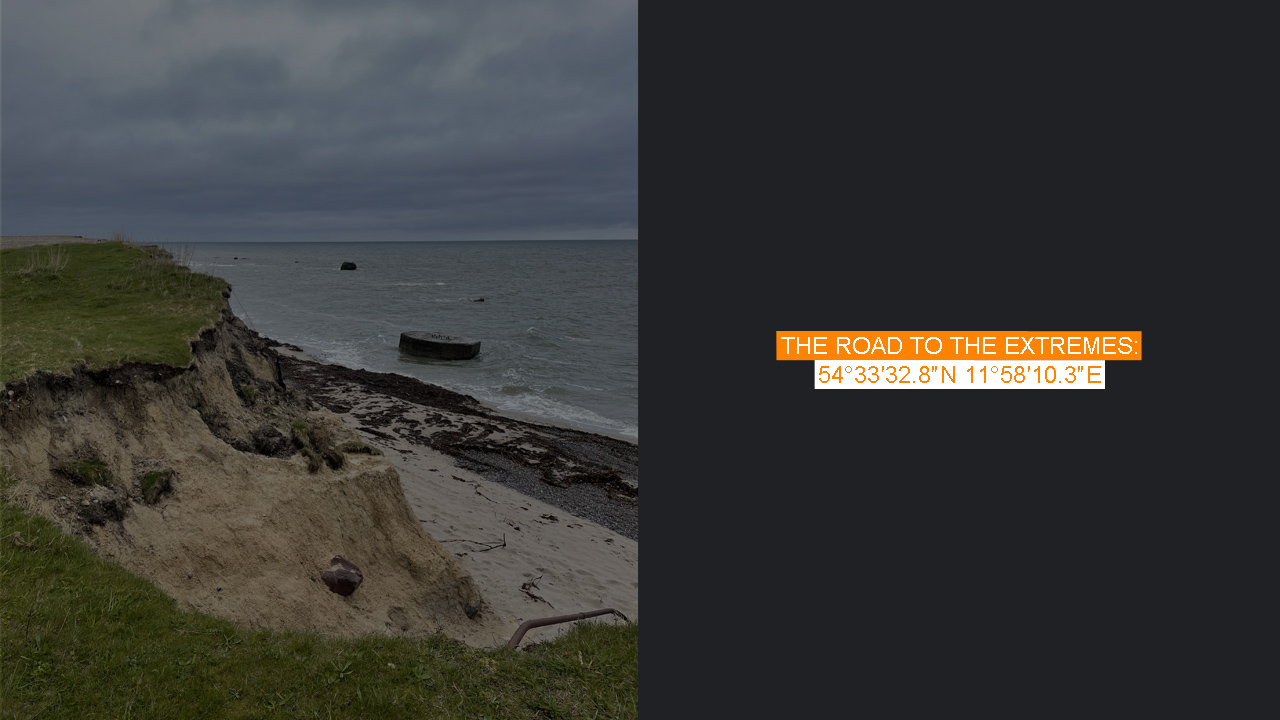Gedser Odde, also known as Gedser Cape, is the southernmost point of Denmark’s mainland, located on the island of Falster. Looking at the map, it’s easy to see that Gedser lies further south than the northernmost territories of Germany, such as Flensburg. In fact, it’s also regarded as the southernmost point of Scandinavia and the entire Nordic region.
Getting to Gedser is fairly straightforward, whether you’re coming from Denmark or Germany. There’s a direct ferry service from Rostock, Germany, to Gedser that runs every two hours, from early morning to late evening. Over a million passengers cross the Baltic Sea each year, including cars, trucks, and cyclists. The Berlin-Copenhagen cycling route also passes through this area. From Copenhagen, it’s about a two-hour drive to reach Gedser Odde — which is exactly how I ended up there.
I wish there was a more adventurous tale behind my journey, but the drive was mostly along highways, and the route was uneventful. Things only started to get interesting once I arrived in Gedser, a quaint town with a population of around 650 people, making it Denmark’s southernmost town. As I drove through, I was greeted by charming, well-preserved historical buildings from the early 20th century. This was no ordinary small town — Gedser was also historically significant, being the first place where German troops landed during the occupation of Denmark in 1940.
Since it was April, the town was quiet, with not much happening. The weather added to the stillness, with overcast skies casting a melancholic, grey light over the town. The road runs along the coastline, with fields on the opposite side, adding to the serene yet slightly somber atmosphere.
After a few kilometers, the road comes to an end at a parking lot, and from there, a building comes into view — a landmark of sorts. This building is part of Gedser’s interesting history. During World War II, the German Wehrmacht built an observation post and radar station at Gedser Odde. These structures also played a crucial role during the Cold War.
The Save Gedser Odde Association has worked tirelessly for over a decade to preserve this historic site, ensuring that part of the old naval station hosts art exhibitions. Gedser Odde was an ideal location for the German observation post during WWII. From here, they could easily monitor the western part of the Baltic Sea. After the war, the Danish Navy took control of the station, and during the Cold War, it became an essential hub for maritime surveillance. The station also coordinated rescue operations and facilitated the safe passage of refugees escaping East Germany.
One of the main attractions at Gedser Odde is the Sydstenen, a large stone marking Denmark’s southernmost point. Weighing around 4 tons, the Sydstenen is believed to be about 1 billion years old. Originally from Sweden, it was transported to Southern Falster by glaciers around 15,000 years ago during the last Ice Age. Standing next to this ancient stone, it’s hard not to be humbled by the sheer scale of time that it represents.
To my surprise, when I visited, the visitor center was permanently closed. As I investigated the area behind the building, the reason for its closure became clear. For years, the Save Gedser Odde Association has measured the distance from the historic building to the edge of the cliff, which has been steadily shrinking due to coastal erosion. The first time they measured, the distance was 16 meters; the last measurement showed only 8 meters.
Now, after the 2023 storm surge, the coastline has eroded even further, and the corner of the building is practically hovering in mid-air. There’s just zero meters left between the building and the cliff. The stairs that once led down to the beach were destroyed, and the view of the cliff’s edge was now a stark reminder of nature’s power.
The storm’s impact wasn’t just on the physical landscape. The Guldborgsund Municipality, which had leased the land for the past 30 years from the Gjedsergaard estate, no longer owns the site. In late 2023, the lease was terminated, and the future of the buildings is now uncertain. There’s a real risk that the historic naval station could be demolished, and the land repurposed for agriculture, restricting public access entirely.
Concerns about the site extend beyond just the buildings. The underground infrastructure — including bunkers and sewage pipes — is at risk as well. Some of these pipes can be seen sticking out from the cliff at Gedser Odde. Until a new agreement is reached, the municipality is closely monitoring the site. Sections of the naval station have been cordoned off due to the risk of collapse, and the sewage system and electricity supply have been shut down. The cliffs, made of sand and clay, range from 5 to 7 meters high and are especially vulnerable to erosion, particularly during storms.
Despite the dramatic changes to the landscape, Gedser Odde remains a vital stop for migratory birds. Especially in the autumn, thousands of birds pass through this region on their journey between Northern Scandinavia and Southern Europe. In the spring, enormous flocks of eider ducks pass Gedser Odde on their way to the breeding grounds in the Baltic Sea, with as many as 130,000 passing in a single day. Alongside them, you can spot the colorful and rare king eider ducks, which travel all the way to Svalbard and the Russian Arctic coast to breed. In the autumn, other species, including geese, ducks, loons, terns, and skuas, also migrate south, flying over the sea near Gedser Odde.
Finally, after wandering around the area, I found my way down to the beach near the parking lot and walked along the shore to the very southernmost point — right in front of the radar station. Standing there, I felt a deep connection to the place. It wasn’t just the geographical significance that struck me, but the history and the natural forces at play. The land beneath my feet has seen centuries of change — from the movements of glaciers to the tides of war, to the erosion that is slowly reclaiming the coast. It felt like standing at the intersection of time, history, and nature — and it was humbling.
In that moment, I was not only at the southernmost point of Denmark, but also of Scandinavia — a spot where the forces of history and nature converge in ways that are both beautiful and fragile.
To make my day even more interesting, my next stop was Padborg, the southernmost point of mainland Denmark – a town about a four-hour drive from Gedser Odde.

